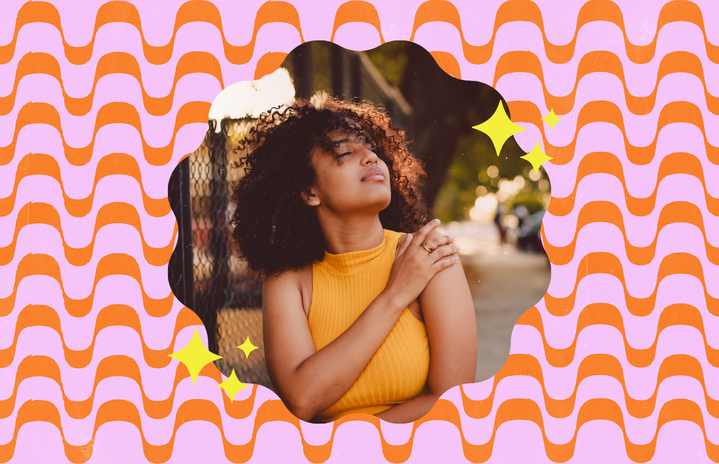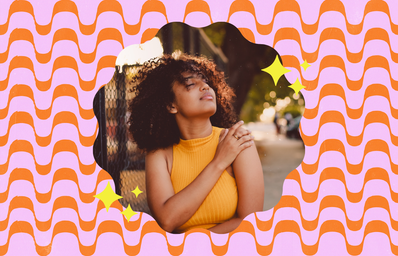Although beauty standards are sometimes ingrained so deeply, so hidden within ourselves that we can’t seem to recognize when the want to be other began, I can pinpoint exactly how I started to hate some things about myself. My first painful dose of self-awareness was handed to me as a child, ironically with some good, old-fashioned Disney Channel transformation as a side. It all started out with my hair.
The Princess Diaries was the first time I had the realization that the root — quite literally — of my insecurities was hanging from the top of my head. Mia was the first time I saw myself on screen: she was a head of curly, frizzy, brunette hair paired with glasses and a lot of awkwardness. It was safe to say that I claimed her as the fictional character — the hero — that I could be. Up until, of course, she went to Genovia, “turned” pretty and became popular, wanted, and so very different from me.
Given that the first occasion in which I felt represented was when I was the sad before of a makeover, it was quite a shock when I found out I couldn’t possibly be seen as attractive being the way I was.
Let me be clear: I don’t mean to say that Anne Hathaway’s perm completely warped my sense of self. In fact, I actually loved The Princess Diaries and watched it well over a hundred times. But, given that the first occasion in which I felt represented was when I was the sad before of a makeover, it was quite a shock when I found out I couldn’t possibly be seen as attractive being the way I was.
Once I was aware of that, it seemed like it was a thought plastered everywhere, from Monica’s “hilarious” frizzy curls in the ‘90s sitcom Friends to all the celebrities that straightened their hair to star in magazine covers. And that realization, that consciousness, was what robbed me of a beauty that I started trying to achieve through flat irons, hair straightening, and every product on the market that could promise me glossy, smooth, and, most importantly, straight hair.
When the natural hair movement regained popularity in the latter half of the 2010s, I started to drift from wanting those straight strands. Finding its balance through the political empowerment of women — and especially Black women — who led it, this rising brought to attention to the familiar stories of accepting textured hair and the delicate acceptance of it.
However, as “big chop,” “transitioning,” and “defining” started to become a part of my vocabulary more and more, I soon found that curly was only the latest trend in beauty, and even the natural texture I disliked was subject to a whole other set of rules I was completely unaware of. Not only rules, but also a whole industry behind the “authentic” hair I craved, that was based on the reality I saw from social media.
Texture could be beautiful, but that love was only circumstantial.
I think, initially, the acceptance for waves and curls was masked because texture became an accessory. Looking for videos on curly hair routines, I found that my hair was still something I should be up against. How to tame your frizzy hair. How I fixed my curly frizzy hair. How to get rid of frizzy curly hair. So, sure, for the first time, texture could be beautiful, but that love was only circumstantial.
Curls were pretty, but only if they were defined in ringlets, freshly washed, with just the right amount of volume and with no frizz whatsoever. Otherwise, it would be messy hair. Careless. Ugly. That was one of the first things I learned as I embraced my natural hair: if you had textured strands, they should be curled to perfection no more, no less.
And, alas, from that one insecurity, many more blossomed. Almost all of them started out with frizz.
Scientifically, hair can be genetically fit into three big groups —European, Asian, and African — that encompass pin-straight, straight to wavy, and curly to kinky textures, respectively. This distinction is based mainly on the shape of the hair follicle. Curly and wavy hair have flat hair follicles and a thinner cuticle layer, which create small angles in the hair’s structure and makes it more susceptible to breakage. As in, curly hair is more prone to frizz.
Frizz, on the other hand, according to the Merriam-Webster dictionary definition, is “hair that is not smooth and neat because individual shafts are variably wavy and do not align together.” Or, basically, hair that does not align with the surrounding hairs. If you think about it, it’s a concept strangely similar to curls themselves: every curl is singular and doesn’t exactly match with its neighbors.
That thought, though, came to me much later than when I learned my curly hair should be frizzy.
Rather, I faced frizz as something natural to my texture only when I ended up complaining about how my hair looked perpetually frizzy to my roommate one time. My roommate looked at me and told me to stop demanding my hair to behave as if it were straight. “Yes, your hair has frizz, but so does every other curly hair. It’s natural,” she told me. And it seems simple, but I swear that advice changed everything.
Curls can look wonky and frizzy.
The thing is, when talking about curly hair, nurture is placed above all else. Of course, it is important to take care of your strands through methods like hydrating masks, oils, and leave-in creams that make the waves more prominent. But nurture doesn’t really change nature.
And, to be honest, that used to really frustrate me. Because, no matter how expensive my creams got or how much I scrunched it all up with mousse, my hair still had frizz. I still had frizz, even as I switched interminably how I defined my curls to have them like I thought they should be: coiled like they were fresh out of a curling wand.
The hard pill to swallow — and the one that my roommate made me accept — was that this doesn’t really change, no matter how good you become at treating your hair right throughout time. So expect it to be bouncy and shiny, but understand that curls can also look wonky and frizzy.
Let your hair be itself. In self-love, there is no such thing as flaws — or the need for a Princess Diaries makeover.


